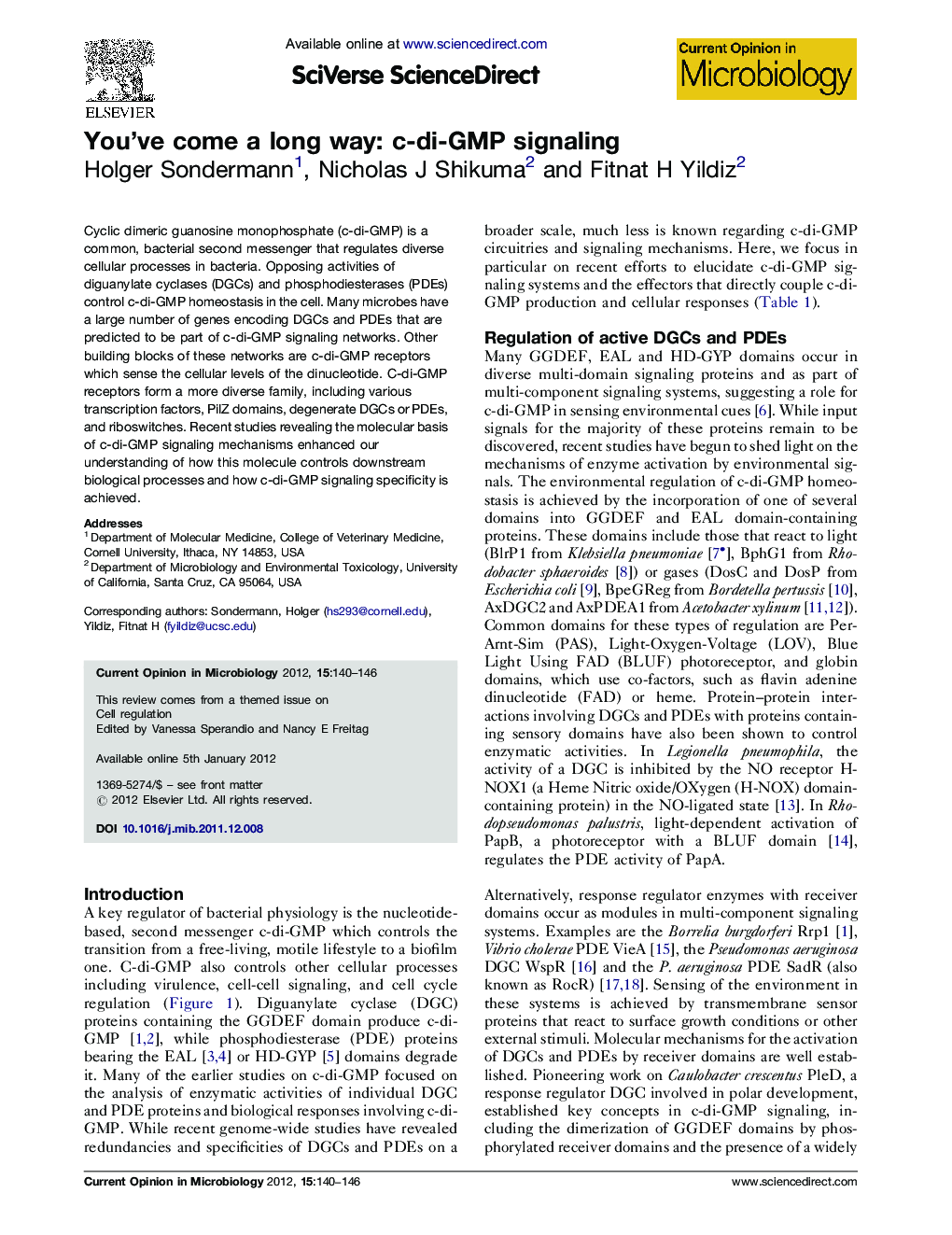| Article ID | Journal | Published Year | Pages | File Type |
|---|---|---|---|---|
| 3399142 | Current Opinion in Microbiology | 2012 | 7 Pages |
Cyclic dimeric guanosine monophosphate (c-di-GMP) is a common, bacterial second messenger that regulates diverse cellular processes in bacteria. Opposing activities of diguanylate cyclases (DGCs) and phosphodiesterases (PDEs) control c-di-GMP homeostasis in the cell. Many microbes have a large number of genes encoding DGCs and PDEs that are predicted to be part of c-di-GMP signaling networks. Other building blocks of these networks are c-di-GMP receptors which sense the cellular levels of the dinucleotide. C-di-GMP receptors form a more diverse family, including various transcription factors, PilZ domains, degenerate DGCs or PDEs, and riboswitches. Recent studies revealing the molecular basis of c-di-GMP signaling mechanisms enhanced our understanding of how this molecule controls downstream biological processes and how c-di-GMP signaling specificity is achieved.
► Nucleotide-based second messengers, such as cyclic dimeric guanosine monophosphate (c-di-GMP), play important roles in the physiology of many bacteria. ► The basic biochemistry of c-di-GMP turnover and c-di-GMP-dependent phenotypes are known. ► Studies on the regulation of c-di-GMP generation and dissolution, identities of c-di-GMP receptors and their targets are contributing to the general understanding of how c-di-GMP signaling operates.
